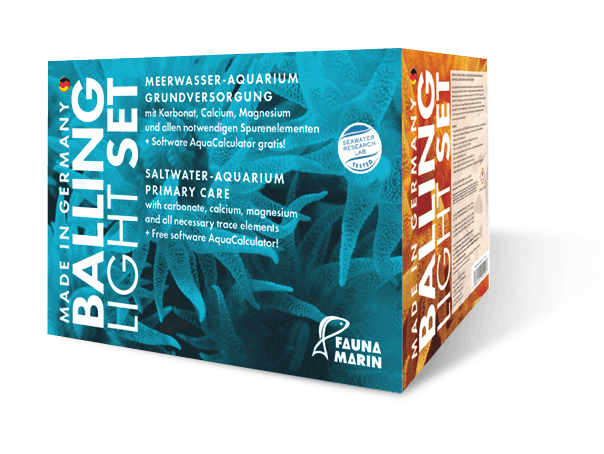Silicic/Silicate
There are quite a few aquarists who wince nervously at the word “silicate”. This is somewhat surprising, since for example the glass of the aquarium is a silicate. For the aquarist the silicic acid is relevant.
What’s that:
Silicates are salts of silicic acid and occur in nature in very large quantities. There are numerous different silicates, but not all are relevant in seawater. In aquaria, a too high value of silicic acid is problematic.
Problems:
Too high values of silicic acid lead to a diatom plague, too low values on the other hand lead to undesireable green deposits on aquarium panes and poor sponge growth.
Measures:
Filtering via adsorber, partial water change and installation of a reverse osmosis unit with downstream ion exchanger ( Fauna Marin MB20)
Indicator species:
Poor growth of sponges and clams can be a sign of insufficient silicate supply. In practice, however, this is extremely rare, as the supply of silicates via feed, sea salt and other products is usually sufficiently high.
Value too high:
Filtering via Phos 0.04 or Powerphos. Installation reverse osmosis system with ultra pure filter (ion exchange resin Fauna Marin MB20).
Too low value:
No dosage provided.
| Variety | Semi-metal |
|---|---|
| Benefit | Silicates are essential for some organisms |
| Default value | 0,1 mg/l (0,26 US.liq.gal.) |
| Skill Level | no dosing intended |
| Source | untested balling salts, reef cement, feed, tap water |
| Available | Sufficient dosage within the system |
| Importance 1–6 | 2 |
| Detection quality | safe |
| Relation values | none |

Balling Light:
The raw materials and salts used in the Balling Light are subject to regular control by our ICP laboratory and constant application in our coral farm. The unique composition of the salt mixtures and trace elements prevents a lack of the required silicate compounds.
As is so often the case, the element in itself does not say anything about its function within an aquarium. Again, this is not directly related to the element silicate, but to silicic acid, the precursor of silicate. Silicic acid also occurs in various forms, and although silicate has a bad reputation in marine aquariums, it is also essential for corals, sponges and algae. So we do have a certain amount of it in our aquariums.
Silicic acid is an important substance in the sea, which is usually absorbed faster than it is replenished. The death of diatoms or inputs from rivers supply the surface water with silicic acid. As silicic acid is acidic, a small amount of dissolved silicon is always present in the form of silicate. Diatoms, for example, use this silicate.
In coral reefs, silicate is found in concentrations between 0.5 and 2 mg/l (0,26 US.liq.gal.). However, corals also utilize planktonic diatoms and other plankters that have absorbed silicic acid. In this respect, the supply of silicon to corals is higher than the pure water value would allow.
Besides the input via tap water, food is also one of the sources for the different forms of silicic acid. As a rule, when water is treated in a reverse osmosis plant with a downstream ion exchanger, the amount of silicic acid introduced is so small that the fear of a diatom plague is not substantial.
Having too much silicic acid in the tank should also be confirmed by having a diatom plague. Usually this can easily be controlled by filtering with iron-based PO4 adsorbers and a modified water treatment.
Tip:
When starting a reef tank, always make sure to use a powerful and high-quality reverse osmosis system with a downstream demineralizer (Fauna Marin MB20 resin). Even if your TDS-meter does not show any contamination of the osmosis water, there is usually still silicate in the water, as this cannot be detected as an uncharged molecule. It is also common practice to add silicates to tap water to protect the tap water system from corrosion. A good tap water treatment is worthwhile.